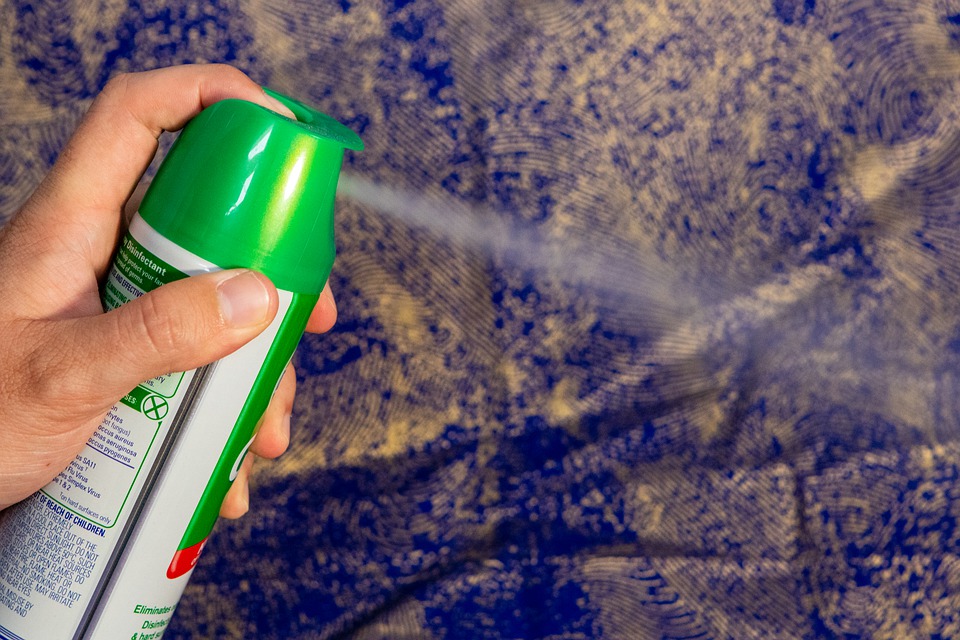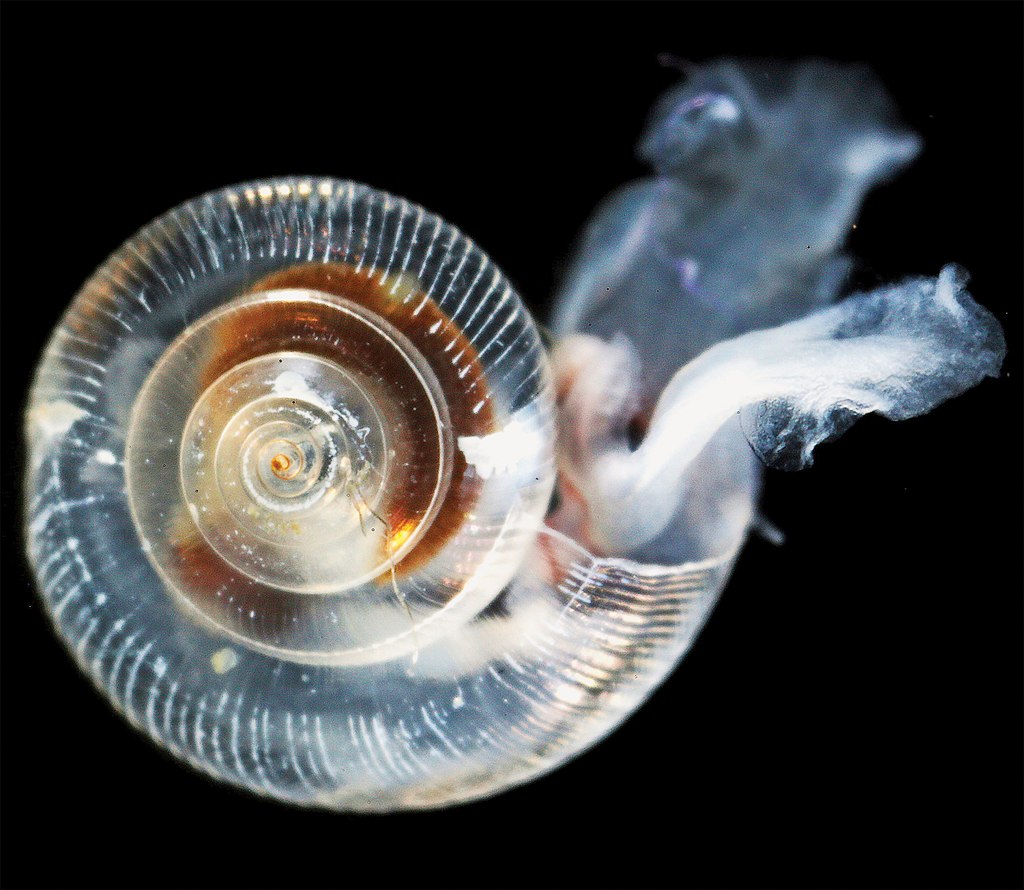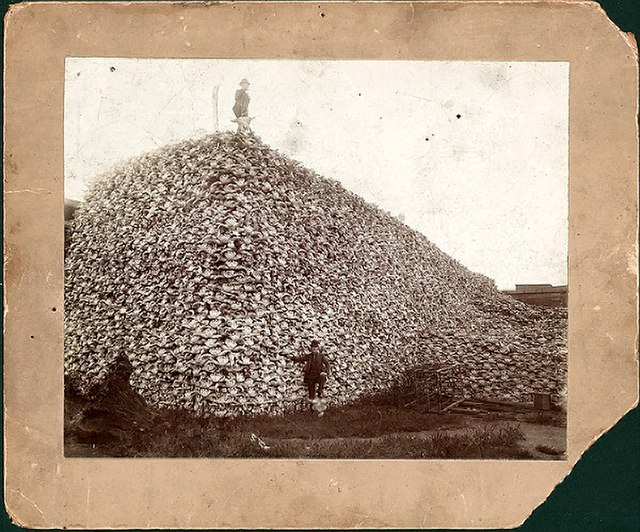Browse By Unit
Jenni MacLean
Jenni MacLean
Contextualizing the Unit
This unit is a culminating look at how the actions of humans can have global impacts. By understanding how our actions can alter environments and the consequences they have on species, we can begin to develop a plan for change. We will explore cases of countries coming together and having great success in preserving Earth's natural resources, as well as times when humans have caused irreparable harm. Some of the topics include global climate change, altering the ocean's temperature and pH, and biodiversity loss. Overall this unit provides a look into the vast impact humans can have and offers avenues for hope and change.
Stratospheric Ozone Depletion

Image from Pixabay
Let's start by talking about the layers of the atmosphere. The troposphere is the layer of air closest to the Earth. The troposphere contains all the air we breathe, greenhouse gasses, and weather ⛅ (clouds, storms, etc.). The stratosphere is the layer above that, further away from Earth. The stratosphere is where the naturally occurring ozone (O3) layer occurs.
The layer of ozone is vital for life on Earth because it absorbs UV radiation from the sun. A molecule of O3 is broken into O2 and O when hit by UV rays. It then quickly reforms into an O3 and is ready to do it again.
Humans altered this process by using Chlorofluorocarbons (CFCs). CFCs are useful as propellants in many products (think of anything that comes out of a spray can). They are a highly stable compound that can make it to the stratosphere unchanged. Once in the stratosphere, they are broken apart by UV radiation, and the chlorine (Cl) is free to bond with oxygen (O) atoms making them unable to reform ozone (O3). This ongoing process is a huge reason why the ozone layer is depleting.
Reducing Ozone Depletion
So that sounds scary- and it is! When UV-A and UV-B rays come into contact with animals, they can cause skin cancer and cataracts. But the good news is, we fixed it! Well, kind of. In 1989 countries gathered together to write and sign the Montreal Protocol. This legislation encouraged the phasing out of ozone-damaging chemicals like CFCs. It was widely signed and implemented in industrialized countries. As a result, we have seen substantial reductions in ozone depletion and a reduction of the 'ozone hole.' (Note: It takes a long time for CFCs to reach the stratosphere, so it will take around 100 years to see the effect of reducing their use entirely.)
Global Climate Change
So here it is, the big topic in APES, climate change. To understand what's going on, we first have to look at the greenhouse effect, which is the naturally occurring process by which heat from solar energy is trapped next to the Earth. Certain gasses have a higher thermal retention property than others, which means they can hold on to heat longer. For example, you know how a coffee mug☕ is good at keeping your coffee warm, while a glass cup 🍷 would let the coffee cool down quickly? It is the same concept - just with gasses.
The primary greenhouse gasses (or gasses that trap heat) are Carbon Dioxide, Methane, Water vapor, Nitrous oxide, and Chlorofluorocarbons (CFCs). Humans increase the amount of these gasses in the troposphere and, in turn, increase the potential for heat to be trapt, thus causing an increase in global average temperatures.
Here is a chart looking at the primary gases, their sources, concentration, and global warming potential (GWP). The GWP is a value of the thermal retention property compared to carbon dioxide, or how much heat it can hold compared to CO2.
Ocean Acidification

Image from Wikipedia
As the Earth is heating up🌡, so are the oceans, but did you know it's also becoming more acidic? The increased concentration of carbon dioxide in the atmosphere is causing more carbon dioxide to absorb into the oceans. When ocean water absorbs carbon dioxide, a series of reactions increase the Hydrogen ions (H+), causing the pH to decrease (become more acidic). Here is the chemical equation of what is going on:
CO2 (aq) + H2O ⇌ H2CO3 ⇌ HCO3− + H+ ⇌ CO32− + 2 H+
The increasing acidity creates problems for organisms that make their bodies out of calcified shells like corals, algae, and shellfish 🐌. Their bodies dissolve, or they are unable to grow as they typically would. This problem expands its impact when we look at organisms like pteropods, which are in decline and are a major basis of the food chain.
Human Impacts on Biodiversity

Image from Wikipedia
The drastic changes that humans are making to the environment impact plants and animals. Both the total number of organisms and the number of species are in decline. The International Union for Conservation of Nature or IUCN estimates that around 25% of all species are currently threatened with extinction. This would mean we are presently in one of the largest mass extinction events in the Earth's history, you know, like when the dinosaurs went extinct, that huge 🐉. It's devastating to think that human actions are causing this mass extinction of species. IUCN has created a Red List that documents the status of plants and animals; check that out HERE.
In general, specialist and K-selected organisms are more susceptible to extinction, where generalist and r selected are more likely to adapt. However, human actions tend to target one species over another. The abbreviation HIPPCO is an excellent way to remember the major reasons for species decline. HIPPCO stands for: habitat destruction, invasive species, population growth, pollution, climate change, and over-exploitation..
Laws and Treaties
1973 - The Endangered Species Act:
United States Regulation created this act to protect endangered and threatened species, designed to preserve habitats to protect organisms from extinction.
1987 - The Montreal Protocol:
The Montreal Protocol is an international agreement designed to phase out the production of chemicals responsible for ozone depletion.
1992 - The Kyoto Protocol:
The Kyoto Protocol is an international agreement to reduce greenhouse gasses.
1996 - National Invasive Species Act (NISA):
A United States federal law intended to prevent invasive species from entering inland waters through ballast water carried by ships.
2016 - The Paris Agreement:
The Paris Agreement is an international agreement within the United Nations Framework Convention on Climate Change (UNFCCC) dealing with greenhouse-gas-emissions mitigation. November 2019, as soon as it was legally possible, the U.S. submitted a formal notice of withdrawal.
🎥 Watch: AP Environmental Science Streams
<< Hide Menu
Jenni MacLean
Jenni MacLean
Contextualizing the Unit
This unit is a culminating look at how the actions of humans can have global impacts. By understanding how our actions can alter environments and the consequences they have on species, we can begin to develop a plan for change. We will explore cases of countries coming together and having great success in preserving Earth's natural resources, as well as times when humans have caused irreparable harm. Some of the topics include global climate change, altering the ocean's temperature and pH, and biodiversity loss. Overall this unit provides a look into the vast impact humans can have and offers avenues for hope and change.
Stratospheric Ozone Depletion

Image from Pixabay
Let's start by talking about the layers of the atmosphere. The troposphere is the layer of air closest to the Earth. The troposphere contains all the air we breathe, greenhouse gasses, and weather ⛅ (clouds, storms, etc.). The stratosphere is the layer above that, further away from Earth. The stratosphere is where the naturally occurring ozone (O3) layer occurs.
The layer of ozone is vital for life on Earth because it absorbs UV radiation from the sun. A molecule of O3 is broken into O2 and O when hit by UV rays. It then quickly reforms into an O3 and is ready to do it again.
Humans altered this process by using Chlorofluorocarbons (CFCs). CFCs are useful as propellants in many products (think of anything that comes out of a spray can). They are a highly stable compound that can make it to the stratosphere unchanged. Once in the stratosphere, they are broken apart by UV radiation, and the chlorine (Cl) is free to bond with oxygen (O) atoms making them unable to reform ozone (O3). This ongoing process is a huge reason why the ozone layer is depleting.
Reducing Ozone Depletion
So that sounds scary- and it is! When UV-A and UV-B rays come into contact with animals, they can cause skin cancer and cataracts. But the good news is, we fixed it! Well, kind of. In 1989 countries gathered together to write and sign the Montreal Protocol. This legislation encouraged the phasing out of ozone-damaging chemicals like CFCs. It was widely signed and implemented in industrialized countries. As a result, we have seen substantial reductions in ozone depletion and a reduction of the 'ozone hole.' (Note: It takes a long time for CFCs to reach the stratosphere, so it will take around 100 years to see the effect of reducing their use entirely.)
Global Climate Change
So here it is, the big topic in APES, climate change. To understand what's going on, we first have to look at the greenhouse effect, which is the naturally occurring process by which heat from solar energy is trapped next to the Earth. Certain gasses have a higher thermal retention property than others, which means they can hold on to heat longer. For example, you know how a coffee mug☕ is good at keeping your coffee warm, while a glass cup 🍷 would let the coffee cool down quickly? It is the same concept - just with gasses.
The primary greenhouse gasses (or gasses that trap heat) are Carbon Dioxide, Methane, Water vapor, Nitrous oxide, and Chlorofluorocarbons (CFCs). Humans increase the amount of these gasses in the troposphere and, in turn, increase the potential for heat to be trapt, thus causing an increase in global average temperatures.
Here is a chart looking at the primary gases, their sources, concentration, and global warming potential (GWP). The GWP is a value of the thermal retention property compared to carbon dioxide, or how much heat it can hold compared to CO2.
Ocean Acidification

Image from Wikipedia
As the Earth is heating up🌡, so are the oceans, but did you know it's also becoming more acidic? The increased concentration of carbon dioxide in the atmosphere is causing more carbon dioxide to absorb into the oceans. When ocean water absorbs carbon dioxide, a series of reactions increase the Hydrogen ions (H+), causing the pH to decrease (become more acidic). Here is the chemical equation of what is going on:
CO2 (aq) + H2O ⇌ H2CO3 ⇌ HCO3− + H+ ⇌ CO32− + 2 H+
The increasing acidity creates problems for organisms that make their bodies out of calcified shells like corals, algae, and shellfish 🐌. Their bodies dissolve, or they are unable to grow as they typically would. This problem expands its impact when we look at organisms like pteropods, which are in decline and are a major basis of the food chain.
Human Impacts on Biodiversity

Image from Wikipedia
The drastic changes that humans are making to the environment impact plants and animals. Both the total number of organisms and the number of species are in decline. The International Union for Conservation of Nature or IUCN estimates that around 25% of all species are currently threatened with extinction. This would mean we are presently in one of the largest mass extinction events in the Earth's history, you know, like when the dinosaurs went extinct, that huge 🐉. It's devastating to think that human actions are causing this mass extinction of species. IUCN has created a Red List that documents the status of plants and animals; check that out HERE.
In general, specialist and K-selected organisms are more susceptible to extinction, where generalist and r selected are more likely to adapt. However, human actions tend to target one species over another. The abbreviation HIPPCO is an excellent way to remember the major reasons for species decline. HIPPCO stands for: habitat destruction, invasive species, population growth, pollution, climate change, and over-exploitation..
Laws and Treaties
1973 - The Endangered Species Act:
United States Regulation created this act to protect endangered and threatened species, designed to preserve habitats to protect organisms from extinction.
1987 - The Montreal Protocol:
The Montreal Protocol is an international agreement designed to phase out the production of chemicals responsible for ozone depletion.
1992 - The Kyoto Protocol:
The Kyoto Protocol is an international agreement to reduce greenhouse gasses.
1996 - National Invasive Species Act (NISA):
A United States federal law intended to prevent invasive species from entering inland waters through ballast water carried by ships.
2016 - The Paris Agreement:
The Paris Agreement is an international agreement within the United Nations Framework Convention on Climate Change (UNFCCC) dealing with greenhouse-gas-emissions mitigation. November 2019, as soon as it was legally possible, the U.S. submitted a formal notice of withdrawal.
🎥 Watch: AP Environmental Science Streams

© 2025 Fiveable Inc. All rights reserved.